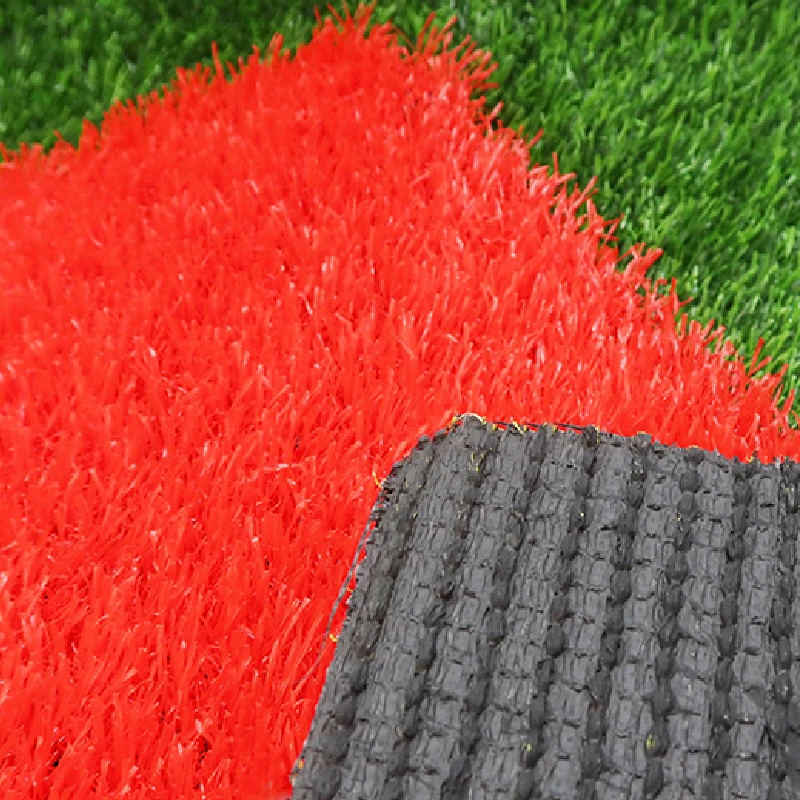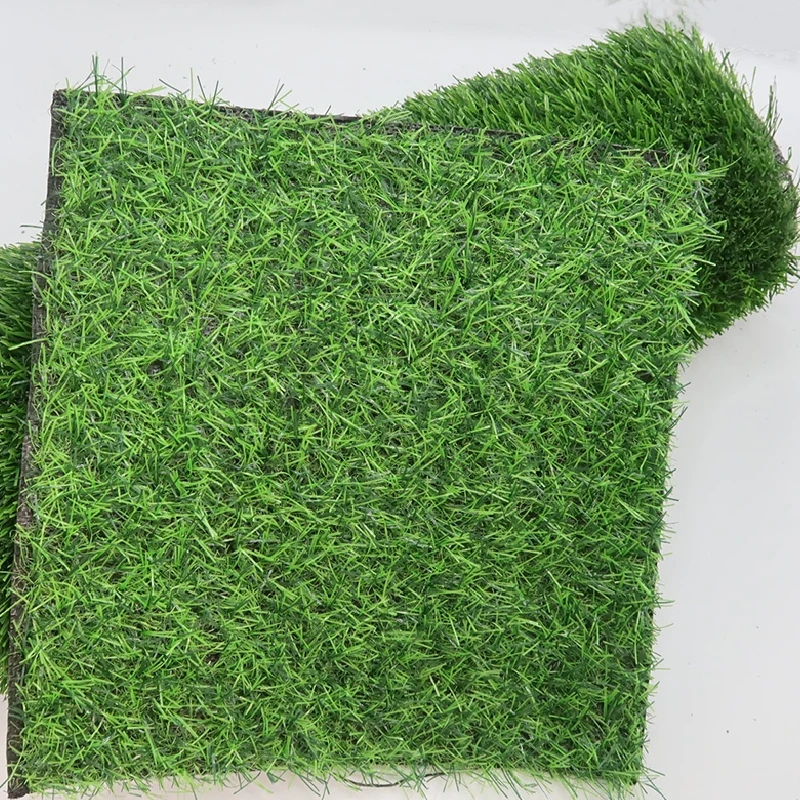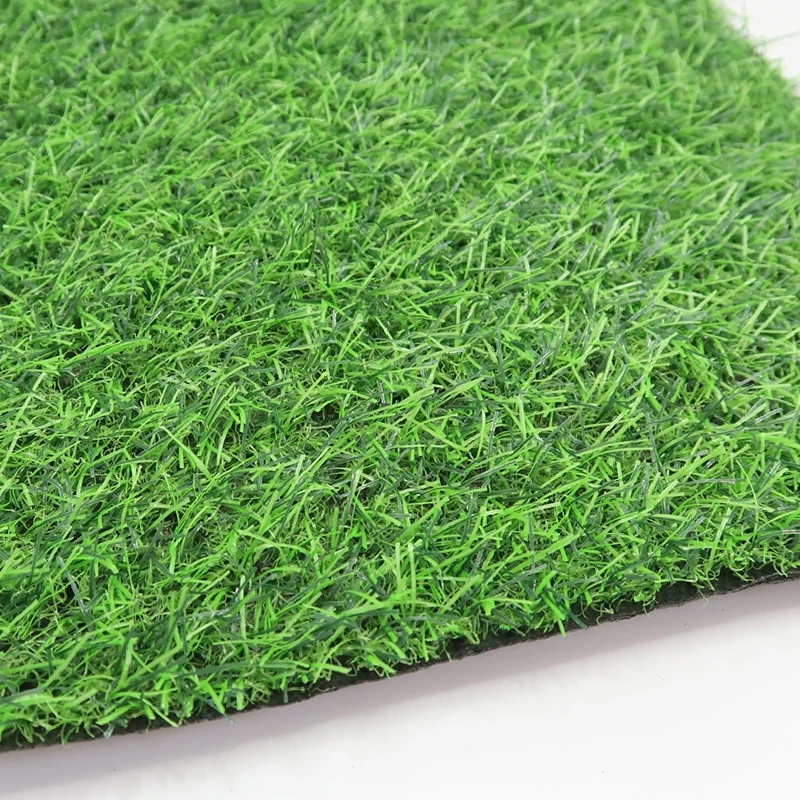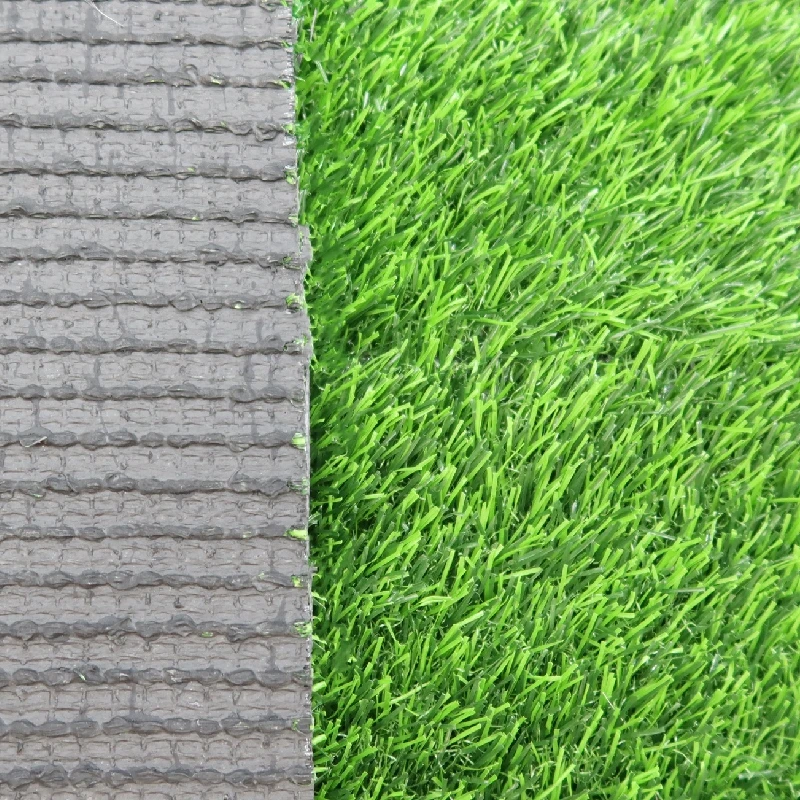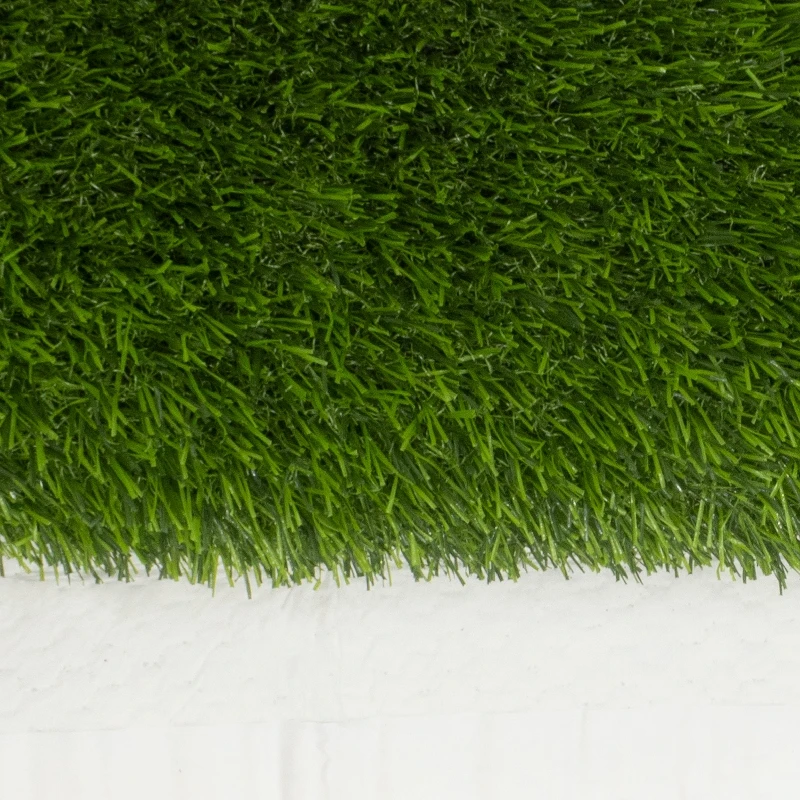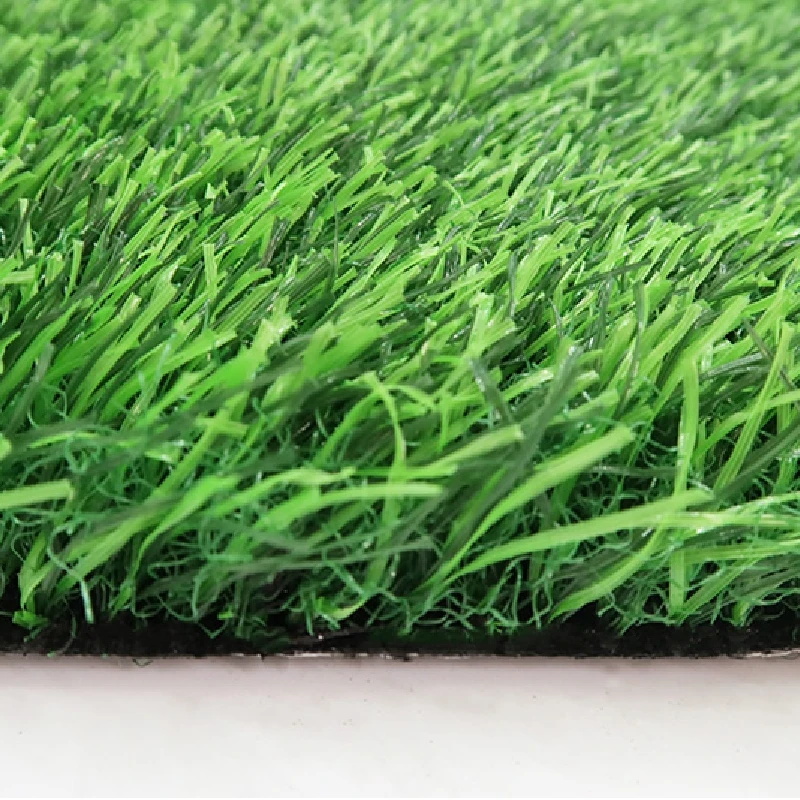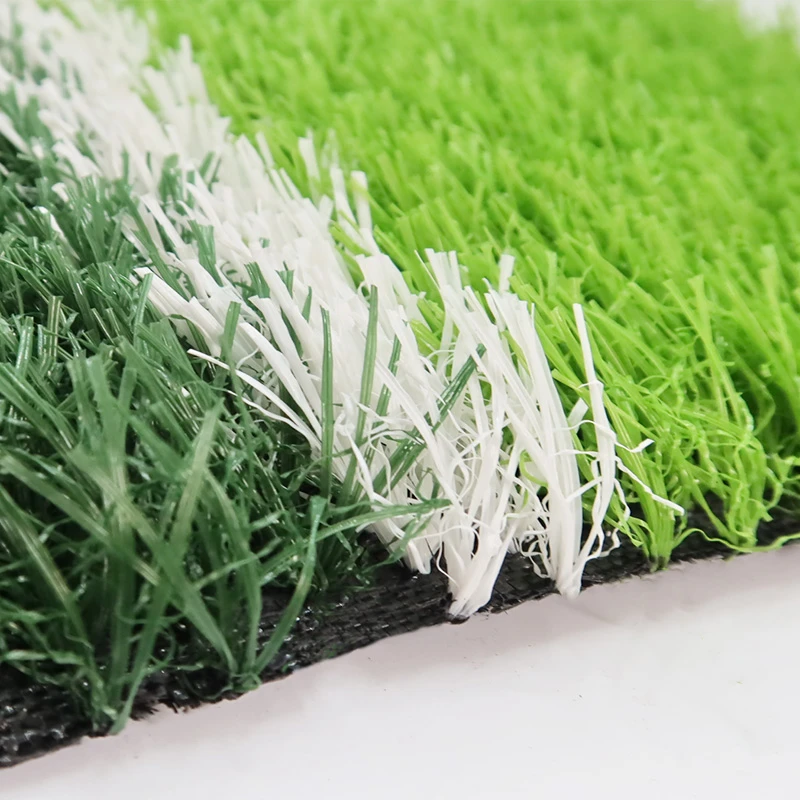Durable Fake Grass Basketball Courts & Multi-Sport Turf
Aug . 15, 2025 03:40 Back to list
The Rise of Synthetic Surfaces in Professional Sports: Focus on Basketball Courts
The global sports infrastructure landscape is undergoing a significant transformation, driven by advancements in material science and a growing demand for durable, low-maintenance, and high-performance playing surfaces. Among these innovations, artificial grass has emerged as a game-changer, extending its utility beyond traditional football or golf fields. Specifically, the adoption of fake grass basketball court solutions is gaining traction, offering unparalleled benefits for both indoor and outdoor athletic facilities. This evolution is not merely about aesthetics but encompasses critical performance metrics, player safety, and environmental sustainability. Facility managers and sports organizations are increasingly evaluating these synthetic alternatives for their long-term value, moving away from conventional hard courts that demand frequent and costly maintenance. The shift reflects a broader industry trend towards versatile, all-weather sporting environments that can withstand intensive use while providing consistent playing conditions.
The versatility of modern synthetic turf systems means they are no longer confined to specific sports. While widely recognized for applications like fake grass for mini golf courses or professional football pitches, the underlying technology can be precisely engineered to meet the unique demands of basketball. This involves careful consideration of surface friction, ball bounce characteristics, and player impact absorption. The inherent durability of advanced synthetic fibers and multi-layered backing systems ensures a significantly extended lifespan compared to natural grass or even some traditional hard courts, making them an economically viable and strategically sound investment for educational institutions, community centers, and professional training facilities alike. This segment will delve into the critical factors that contribute to the superior performance and growing popularity of these innovative sports surfaces, analyzing their technical specifications and real-world advantages.
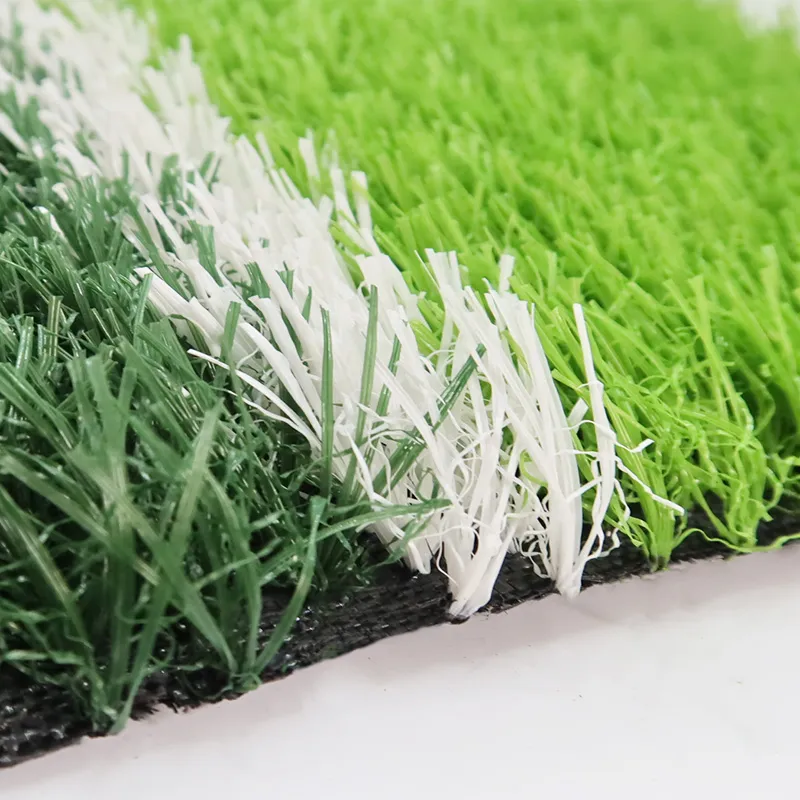
The Advanced Manufacturing Process of High-Performance Synthetic Turf
The creation of a high-quality fake grass basketball court surface is a sophisticated engineering process that combines material science with precision manufacturing techniques. It begins with the selection of premium polymer raw materials, typically polyethylene (PE) or polypropylene (PP), known for their durability, resilience, and UV stability. These polymers are extruded into yarn fibers, which are then twisted and heat-set to create robust, natural-looking blades. The manufacturing process itself is akin to large-scale textile production, known as tufting, where these synthetic fibers are machine-stitched into a primary backing material, often made from woven polypropylene, creating the turf carpet. This tufting process ensures uniform density and pile height, critical for consistent ball roll and player interaction.
Following the tufting stage, a crucial step involves applying a robust secondary backing. This backing, usually made of latex or polyurethane (PU), is coated onto the reverse side of the primary backing, securely locking the tufted fibers in place. This ensures exceptional tuft lock strength, preventing fibers from pulling out under heavy use and extending the overall service life of the turf, typically ranging from 8 to 15 years depending on traffic and maintenance. Quality control throughout this process is paramount, with manufacturers adhering to stringent internal and external inspection standards such as ISO 9001 for quality management and ASTM F1551 for general turf performance characteristics. These rigorous checks ensure that each roll of turf meets precise specifications for density, stitch rate, pile height, and backing bond strength, guaranteeing a superior product ready for demanding sports applications. The integration of advanced polymer treatments also enhances features like UV resistance and flame retardancy, contributing to the longevity and safety of the final installation.
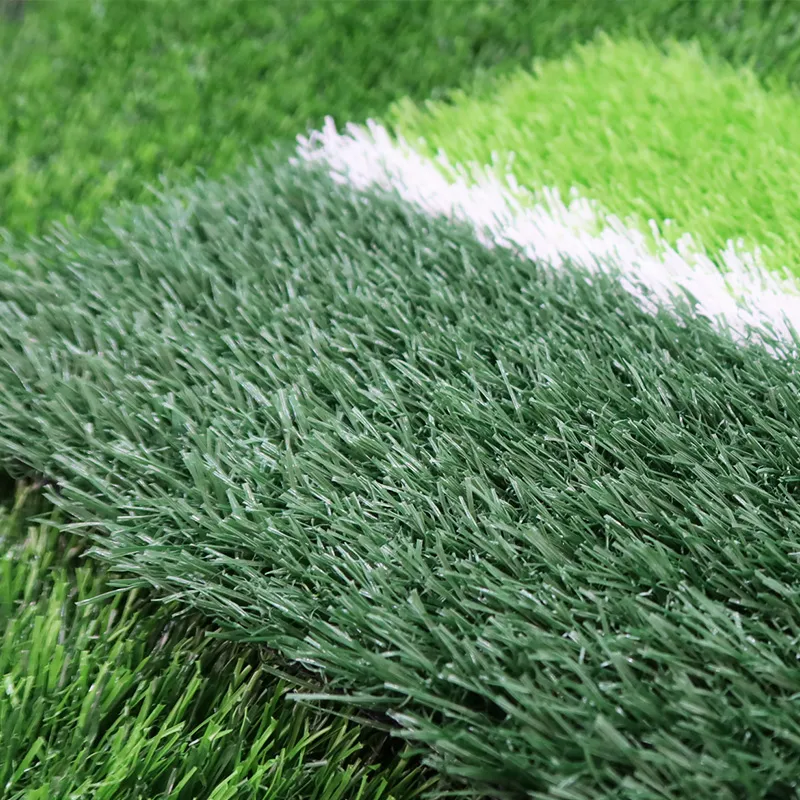
Key Technical Parameters and Performance Benchmarks
Understanding the technical specifications of synthetic turf is crucial for selecting the optimal solution for a fake grass basketball court. Parameters such as pile height, density, and infill type directly influence playability, safety, and durability. Pile height refers to the length of the synthetic fibers above the backing, typically shorter for basketball to ensure consistent ball bounce and rapid player movement. Density, measured in stitches per square meter, indicates the number of fibers, influencing the turf's resilience and wear resistance. Dtex, short for decitex, measures the linear mass density of the yarn, with higher Dtex values indicating thicker and more durable fibers. The infill system, often a mix of sand and performance granules (like SBR rubber, TPE, or EPDM), provides ballast, cushioning, and determines the surface's shock absorption and energy restitution properties.
The table below outlines typical and optimal parameters for a high-performance fake grass basketball court, derived from industry best practices and research into sports surface science. These metrics ensure the turf provides optimal traction for quick pivots and stops, predictable ball rebound, and effective shock absorption to reduce athlete fatigue and injury risk. These parameters are meticulously balanced to create a playing surface that supports dynamic movements while offering superior comfort compared to rigid asphalt or concrete courts. The selection of backing material also plays a vital role; polyurethane backings, for instance, offer superior dimensional stability and moisture resistance, making them ideal for high-humidity environments or outdoor installations subject to significant temperature fluctuations.
| Parameter | Description | Typical Range for Basketball | Impact on Performance |
|---|---|---|---|
| Pile Height | Length of fibers above backing | 18 mm - 25 mm | Influences ball roll, bounce, and player stability. Shorter for basketball. |
| Dtex (Yarn Weight) | Linear mass density of yarn (grams per 10,000 meters) | 8,000 - 12,000 Dtex | Indicates fiber durability and resilience. Higher Dtex means more robust fibers. |
| Stitch Rate (Density) | Number of stitches per 10 cm of turf roll | 180 - 220 stitches/10cm | Determines turf density and overall resilience. Higher stitch rate for dense turf. |
| Gauge | Distance between stitch lines | 3/8 inch or 5/8 inch | Affects turf uniformity and drainage. |
| Infill Type | Granular material embedded in the turf | Silica Sand, SBR/TPE/EPDM granules | Provides ballast, shock absorption, energy return, and consistent ball bounce. |
| Backing Material | Primary and secondary layers supporting fibers | PP + SBR Latex / PU | Ensures tuft lock, dimensional stability, and drainage. PU offers superior durability. |
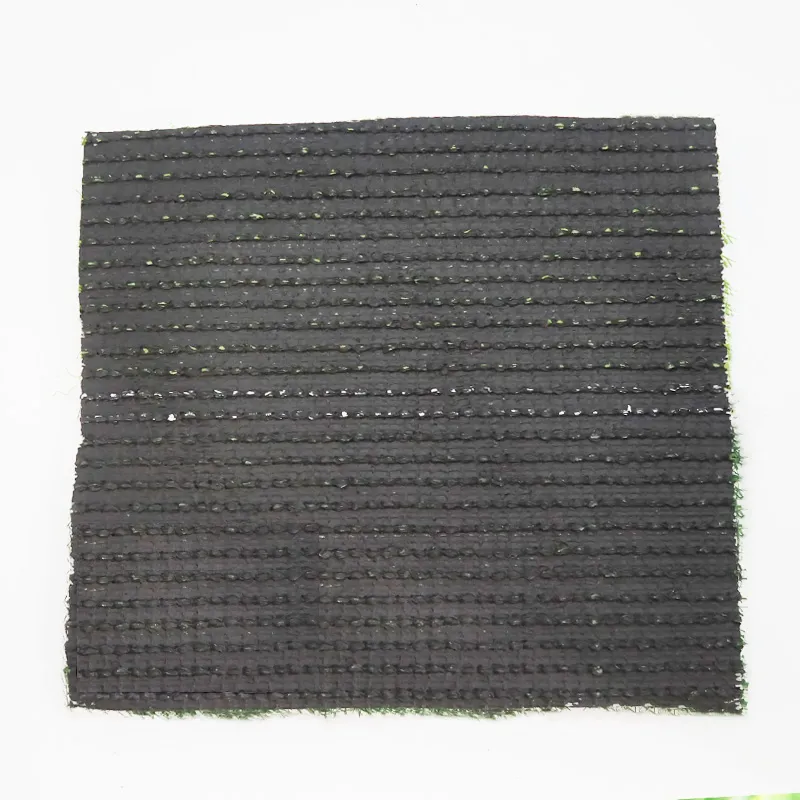
Application Scenarios and Strategic Advantages
The strategic advantages of implementing a fake grass basketball court extend across various application scenarios, making it an optimal choice for diverse clients. Educational institutions, from primary schools to universities, benefit from its durability and low maintenance, allowing for more playing hours with reduced operational costs. Community sports centers and municipal parks find synthetic turf ideal for creating multi-purpose courts that can accommodate not only basketball but also sports like futsal artificial turf or general recreational activities, maximizing facility utilization. Private sports clubs and training academies leverage the consistent performance and all-weather playability, ensuring athletes can train year-round regardless of climatic conditions, which is crucial for high-level athletic development.
Beyond direct playability, the inherent properties of advanced synthetic turf systems offer significant operational benefits. Their resistance to UV degradation, mold, and mildew ensures longevity even in challenging outdoor environments, minimizing the need for frequent repairs or resurfacing. The superior drainage capabilities of porous infill systems prevent standing water, making courts playable much faster after rain compared to traditional hard surfaces. Furthermore, the cushioning effect provided by the turf and infill significantly reduces impact forces on players' joints and ligaments, thereby decreasing the risk of common sports injuries. This focus on player safety, combined with reduced water consumption for maintenance and elimination of harmful pesticides or fertilizers, positions synthetic turf as an environmentally responsible and economically compelling choice for modern sports infrastructure development.
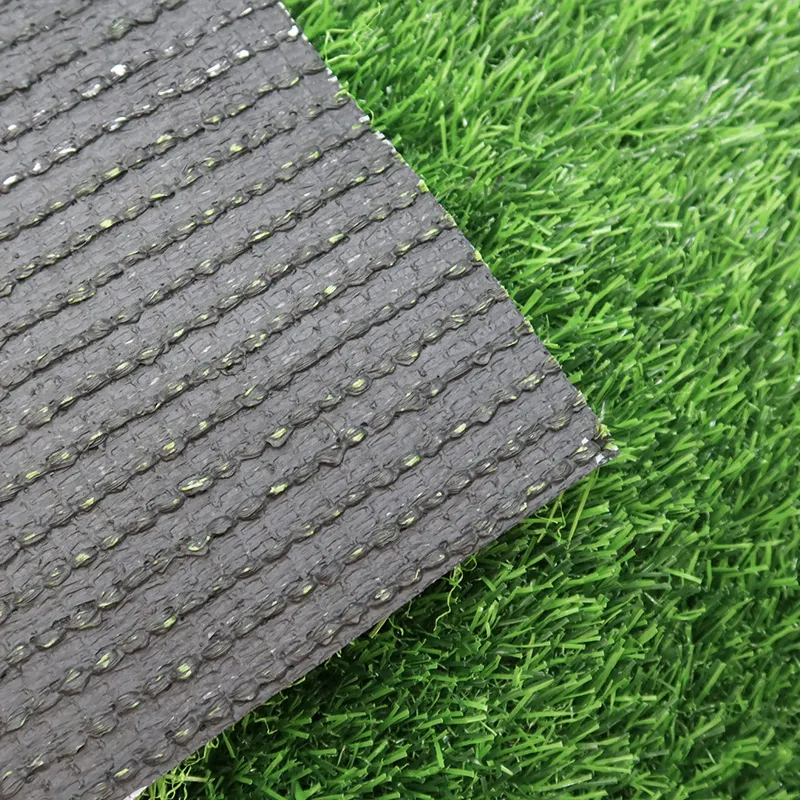
Ensuring Quality: Certifications, Standards, and Authoritative Endorsements
The credibility and performance of a fake grass basketball court are underscored by adherence to international quality standards and industry-specific certifications. Manufacturers like Hoyarn Grass prioritize rigorous testing and certification processes to ensure their products meet the highest benchmarks for safety, durability, and playability. Key certifications include ISO 9001 for quality management systems, demonstrating a commitment to consistent product quality and customer satisfaction. Beyond general manufacturing standards, synthetic turf for sports applications is often tested against specific sports-related performance criteria. While basketball doesn't have a dedicated turf standard like FIFA Quality Programme for football, many general sports surface standards like ASTM F1551 (Standard Test Methods for Comprehensive Characterization of Synthetic Turf Playing Surfaces) and DIN 18035-7 (Sports Fields - Artificial Turf Areas) are highly relevant.
These authoritative standards cover critical parameters such as shock absorption, energy restitution, rotational resistance (traction), vertical deformation, and durability under accelerated wear. Comprehensive testing ensures that the surface provides optimal player comfort and safety, minimizes injury risks, and offers consistent ball bounce characteristics vital for basketball. For instance, a surface with a high shock absorption rate (often measured in Gmax values) effectively reduces the impact on an athlete's joints during jumps and landings. Rotational resistance ensures players can make quick cuts and pivots without excessive friction or slipping. Companies that openly provide detailed test data and hold certifications from independent third-party laboratories demonstrate a strong commitment to product excellence and transparency, building significant trust with B2B clients who require guaranteed performance and longevity from their investments in sports infrastructure.
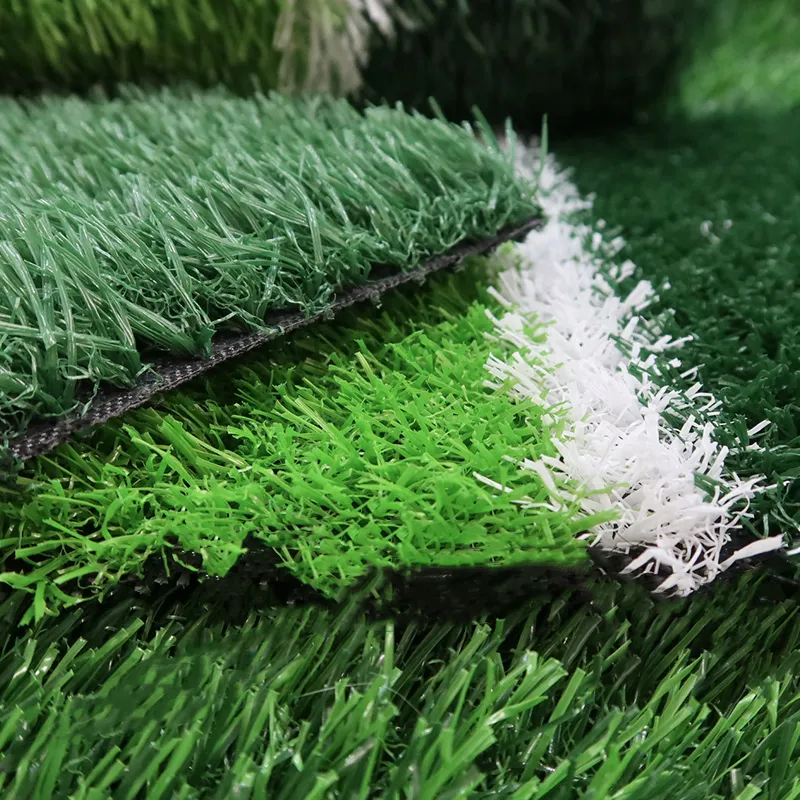
Customization and Seamless Project Implementation
Designing and installing a fake grass basketball court requires a tailored approach to meet specific client needs and site conditions. Customization options extend beyond basic turf selection, encompassing pile height, fiber type, color schemes for court markings, and infill systems optimized for distinct performance requirements. For example, some clients may prioritize maximum shock absorption for youth sports, while others might focus on precise ball bounce for professional training. Manufacturers and suppliers often work closely with clients to develop bespoke solutions, considering factors such as expected traffic volume, climate, sub-base conditions, and budget constraints. This collaborative design process ensures that the final installation not only looks professional but also performs optimally for its intended use, whether it's a high-performance training facility or a versatile community playground.
The implementation phase is critical for the long-term success of a synthetic turf project. A typical delivery cycle involves initial site assessment and preparation, which may include grading, drainage system installation, and creation of a stable aggregate sub-base. The turf rolls are then transported to the site, unrolled, seamed together, and anchored securely. Finally, the infill material is applied evenly, typically using specialized machinery to ensure uniform distribution and correct depth. Reputable suppliers provide comprehensive project management, from initial consultation and design to installation guidance and post-installation support. This end-to-end service minimizes potential issues and ensures the project is completed on schedule and within budget, translating into reduced downtime for facilities and faster realization of operational benefits for the client. The ability to customize court dimensions and integrate specific branding or logos directly into the turf further enhances the appeal for professional organizations seeking unique, high-impact facilities.
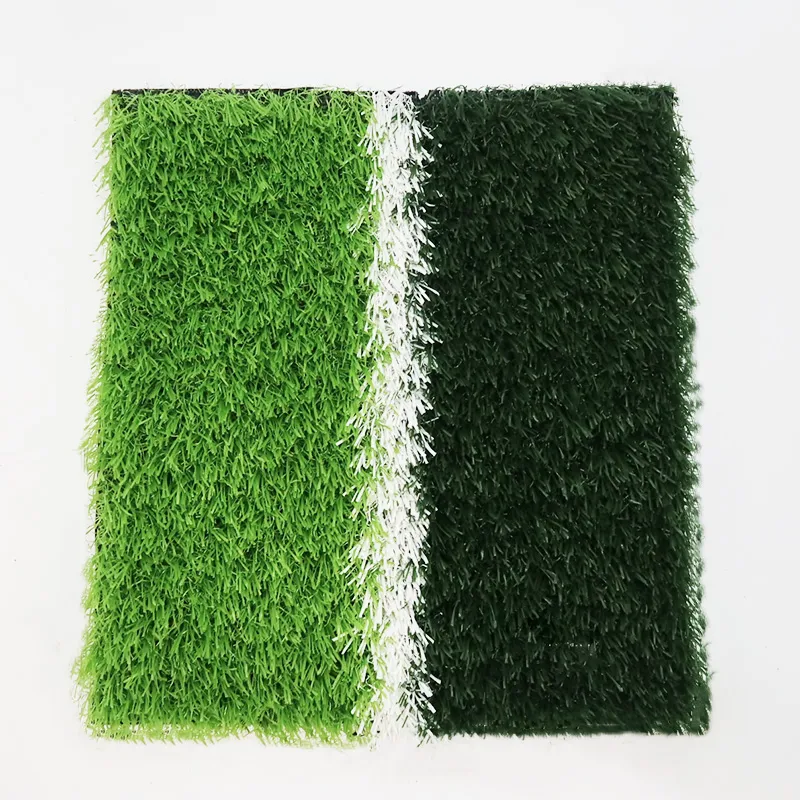
Real-World Applications and Client Success Stories
The proven performance of a fake grass basketball court is best exemplified through its successful deployment in various real-world scenarios. Across municipal sports complexes, educational campuses, and private athletic clubs, synthetic turf basketball courts have consistently delivered on their promise of durability, low maintenance, and enhanced player experience. For instance, a recent project involving a multi-sport facility in a high-traffic urban area saw the installation of a custom-designed synthetic court that seamlessly integrates basketball with other recreational uses. Feedback from facility managers highlights the significant reduction in water usage compared to natural grass solutions and the dramatic decrease in routine maintenance requirements, freeing up resources for other operational needs.
One notable success story involves a university that replaced its aging asphalt basketball courts with a state-of-the-art synthetic turf system. The university reported a substantial increase in court utilization, primarily due to its all-weather playability and the perceived safety benefits by student-athletes. The cushioned surface was particularly praised for reducing fatigue during extended playing sessions and minimizing impact-related injuries, leading to positive testimonials from both coaches and players. Furthermore, the aesthetic appeal of the perpetually green and vibrant surface significantly enhanced the overall visual quality of the campus sports zone. These case studies underscore the practical benefits and return on investment that businesses and institutions can expect when choosing high-quality synthetic turf solutions for their basketball court projects. The long-term performance and reduced operational costs make a compelling argument for this innovative surface in the competitive sports infrastructure market.
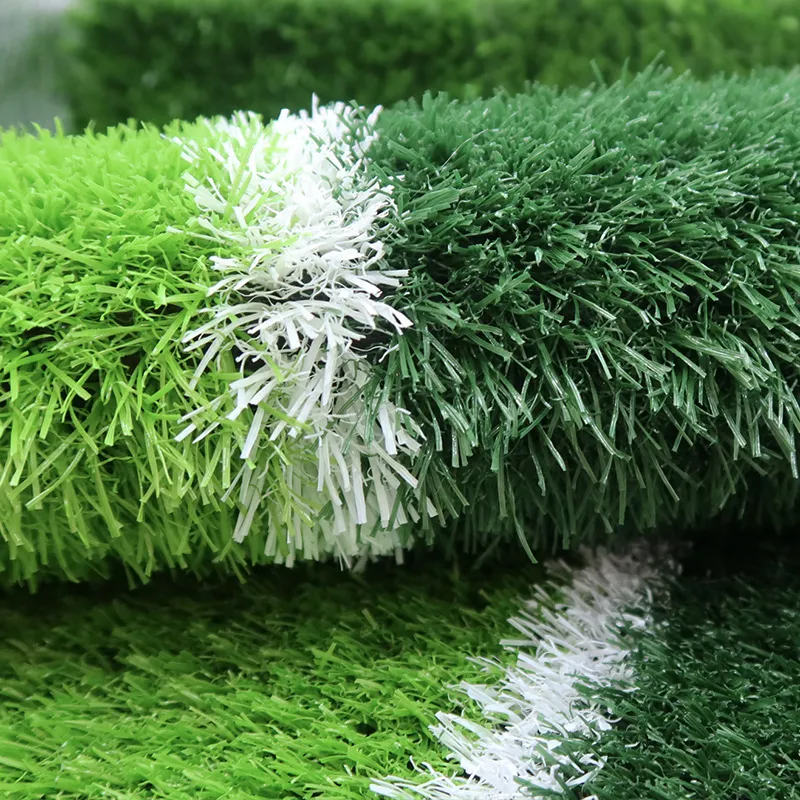
Addressing Common Concerns: FAQ & Ongoing Support
Frequently Asked Questions (FAQ)
- Q: What is the typical lifespan of a fake grass basketball court?
A: High-quality synthetic turf basketball courts typically have a lifespan of 8 to 15 years, depending on traffic intensity, maintenance practices, and environmental conditions. Regular maintenance can significantly extend this duration. - Q: How does synthetic turf affect ball bounce for basketball?
A: Modern synthetic turf systems for basketball are engineered with specific pile heights and infill compositions to ensure a consistent and predictable ball bounce, mimicking the characteristics of a high-performance hard court. - Q: Is synthetic turf safe for players?
A: Yes, in fact, advanced synthetic turf offers superior shock absorption compared to traditional hard surfaces, significantly reducing impact on joints and minimizing the risk of common sports injuries. The infill system provides a forgiving surface. - Q: What maintenance is required for a synthetic turf basketball court?
A: Maintenance is significantly lower than natural grass. It primarily involves occasional brushing to redistribute infill, debris removal, and periodic deep cleaning. No watering, mowing, or fertilizing is needed. - Q: How long does the installation process take?
A: The total installation time varies based on court size, site preparation requirements, and complexity. Typically, once site preparation is complete, the turf installation itself can range from a few days to a couple of weeks for a standard full-size court.
Delivery Cycle & Warranty Commitment
Hoyarn Grass prides itself on transparent and efficient delivery cycles. Upon project confirmation, our standard lead time for manufacturing and shipping the turf materials is typically 3-6 weeks, depending on customization requirements and order volume. We provide detailed logistics support, ensuring timely delivery to your project site. Our commitment to quality is reinforced by a robust warranty program. Our Artificial Grass for Professional Sports Fields typically comes with an 8-year warranty against manufacturing defects and excessive UV degradation, reflecting our confidence in product durability and performance. This warranty period underlines the long-term reliability and value offered by our solutions, providing peace of mind for our clients' investments.
Customer Support & Post-Installation Service
Our dedication to client satisfaction extends far beyond the sale and installation. Hoyarn Grass offers comprehensive post-installation customer support, including guidance on optimal maintenance practices, access to technical experts for any operational queries, and support for routine inspections. Our experienced team is available to assist with any concerns regarding your fake grass basketball court, ensuring its continued high performance and longevity. We believe in building lasting partnerships, providing not just a product but a complete solution backed by industry-leading expertise and responsive service. This commitment to ongoing support ensures maximum uptime and return on investment for all our B2B partners.
Conclusion and Future Outlook for Synthetic Sports Surfaces
The adoption of advanced synthetic turf, exemplified by the increasing popularity of fake grass basketball court solutions, represents a paradigm shift in sports infrastructure. This evolution is driven by compelling advantages in durability, lower maintenance requirements, enhanced player safety, and versatile all-weather playability. As sports organizations and facility managers seek sustainable and cost-effective alternatives to traditional surfaces, synthetic turf offers a technologically superior solution that meets the rigorous demands of professional athletics while delivering long-term economic benefits. The continuous advancements in fiber technology, infill systems, and backing materials promise even more optimized performance and environmental responsibility in the years to come.
For businesses and institutions considering upgrading or developing new sports facilities, investing in a high-quality synthetic turf system like Artificial Grass for Professional Sports Fields from a reputable manufacturer ensures a future-proof solution. The ability to customize parameters, coupled with adherence to stringent quality standards and comprehensive post-installation support, makes this technology a strategic asset. The trend towards multi-functional sports zones and the demand for year-round playable surfaces will only solidify the position of synthetic turf as the preferred choice for modern sports environments, fostering athletic development and community engagement globally.
References
- American Society for Testing and Materials (ASTM) F1551. (2022). Standard Test Methods for Comprehensive Characterization of Synthetic Turf Playing Surfaces.
- International Organization for Standardization (ISO) 9001. (2015). Quality management systems – Requirements.
- DIN 18035-7. (2014). Sports Fields – Part 7: Artificial Turf Areas; Requirements, Planning, Construction, Maintenance.
- Fortune Business Insights. (2023). Artificial Grass Market Size, Share & COVID-19 Impact Analysis, By Infill Material, By Application, and Regional Forecast, 2023-2030.
- The Sports & Play Industry Association (SAPCA). (2023). Guide to the Design, Specification & Construction of Artificial Grass Pitches.
-
Durable, Eco-Friendly Turf for Balcony | Enhance Your Urban Space
NewsNov.24,2025
-
Turf Between Pavers: Sustainable Green Paving Solutions for Modern Urban Spaces
NewsNov.24,2025
-
Discover the Benefits of Turf and Pavers Backyard | Sustainable Outdoor Design
NewsNov.24,2025
-
Top Quality Artificial Grass – Sustainable, Durable, and Stylish Turf Solutions
NewsNov.24,2025
-
Durable and Eco-Friendly Thick Artificial Grass Solutions | Hoya Grass
NewsNov.24,2025
-
Synthetic Turf: Sustainable Green Solutions for Sports, Industry & Urban Living
NewsNov.24,2025
Products categories



